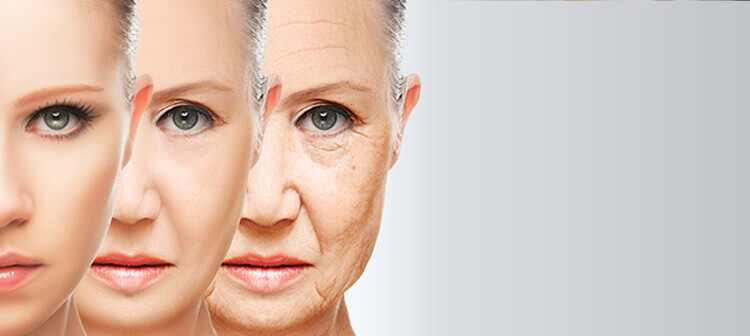For years, women have been well aware of the significant discrepancy in the gender divide when it comes to ageing. Men are silver foxes with rugged good looks that are still dynamic when burnished with experience. Women, on the other hand, are under increasing pressure to look young, even when having to deal with major ageing milestones such as the menopause.
Now, we have scientific proof that the natural ageing process isn’t as kind to women as men, with evidence that, when women get to a certain age, they experience accelerated ageing in comparison to their male peers.
The menopause and facial ageing
The unpleasant side effects of the menopause have long been documented, but recent research has revealed that wrinkles, sagging and a deterioration in skin quality actually speeds up during the menopause years. Here, we take a look at what the study revealed about male and female ageing and what cosmetic surgery or non-surgical aesthetic treatment can tackle these ageing changes.
Researchers from the University of Vienna analysed 88 different faces of men and women in Croatia, comparing them between different age groups. They discovered that ageing progresses in a similar manner for both men and women until they reach the age of 50.
However, once they get to 50, certain signs of facial ageing speed up for women while they stay the same for men. The menopause is indicated as a major factor as the hormonal changes that women experience are directly linked to our skin composition.
How our face changes as we age
The study didn’t just reveal an interesting link between the signs of ageing and the menopause. It also identified how our facial structure changes as we age, which Mr Alex Karidis has identified and incorporated in his approach to facial rejuvenation.
The study identified that the first signs of ageing in the face begins between the ages of 20 and 30. A combination of physiological changes start to take place, including alterations to the skin, bone and muscle structure and soft tissues of the face.
The changes identified in women’s facial structure after the age of 50, showed a flatter face, deep nasolabial folds, sagging of the soft tissue and a longer nose and ears. These were just some of the changes identified.
Procedures that reverse facial ageing
There are a number of cosmetic surgery and aesthetic procedures that can help to tackle facial ageing and often the best result is achieved with a carefully thought out programme of procedures.
One of the key signs of facial ageing is loss of volume and sagging of the tissues of the mid-face, as the cheeks become flatter, with furrows developing under the eyes and folds appearing around the nose and mouth as well as a distinct loss of definition along the jawline.
In terms of surgical intervention, one of the facial surgery options that Mr Karidis performs is the SMAS facelift. This repositions sagging facial muscles and soft tissues in the mid-face, improving the contours of the cheek and jawline to produce a balanced and natural rejuvenation.
As well as cosmetic surgery, there are also a number of minimally invasive aesthetic procedures that have become increasingly popular in recent years. As standalone treatments, they are ideally suited to tackling the first signs of facial ageing, but for accelerated facial ageing, the optimal results are produced by combining facial rejuvenation surgery with anti-wrinkle injections to tackle dynamic wrinkles and dermal filler treatments to restore lost volume in the mid-face.
In terms of accelerated facial ageing, these non-surgical treatments still have a role to play; dynamic wrinkles that occur in the upper third of the face respond best to anti-wrinkle injections which temporarily smooth the overlying skin. Dermal fillers can also be used to restore volume in the mid-face and can either be used as a standalone treatment or in conjunction with a facelift.
For more information, call 0203 553 6026 to arrange a consultation with Mr Alex Karidis.
















